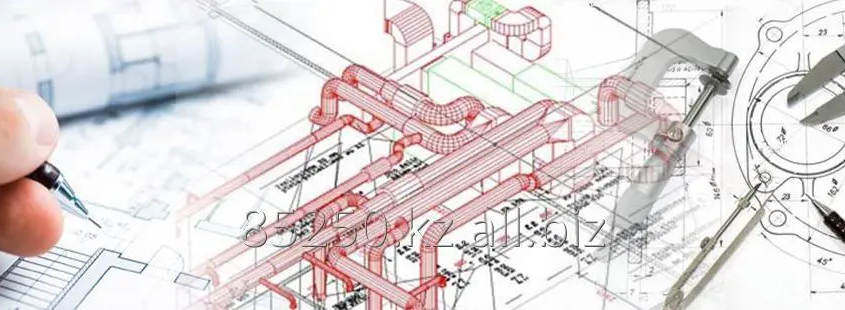Top 10 Types of Access Doors for Commercial Construction Projects (2025 Guide)
It is also important to know how to get in and out of the structure before you manage to delve into the details of commercial construction, and access doors are the pillar of it. From ensuring fire safety compliance to maintaining structural integrity, the right types of access doors can make or break a project’s efficiency, aesthetics, and long-term cost-effectiveness.
In this blog, we are going to discover the 10 best access doors of a commercial construction project, provide real-life statistics and demonstrate how time, money and headache-saving smart planning with inspection-compliant panels are.
Unlock the Essentials of Access Doors in Commercial Construction!
As far as commercial construction projects are concerned, each detail counts and access door types become an important aspect, concerning safety, maintenance and efficiency. Whether it is meeting the demanding building code regulations or the fact that the right access panel allows a seamless integration with the mechanical, electrical and plumbing systems, the latter is invaluable.
The growing trend of smart and compliant solutions is represented by the global access doors and panels market, which is expected to grow by 3.36% (CAGR 3.36%) to reach a value of 4.93B in 2023 and 6.01B in 2029. CAD DRAFTER provides professional drafting and marking services so that your projects are code-ready and economical.
Why Access Doors Are Essential for Commercial Projects?
Commercial buildings in the U.S. have a population of around 5.9 million and a total of about 97 billion ft 2 (CBECS 2018, EIA), which means that compliance and maintenance of inspections is a colossal task. In commercial construction companies, well-drawn wall access doors are vital in ensuring that mechanical, electrical and plumbing systems can be accessed without incurring unnecessary expenses.
Efficiency Meets Safety
Access panels offer adequate space for inspection, repair and upgrades and comply with the ICC and NFPA standards. One of the tips many people can use is to strategically place access doors in corridors or ceilings according to the routine maintenance. This will save thousands in terms of labor. Intelligent planning does not give headaches tomorrow.
Top 10 Types of Access Doors for Commercial Construction
The selection of the appropriate types of access doors has become a critical issue in commercial construction projects since it influences the structural integrity, maintenance performance and conformance.
Ranging from fire-resistant panels to discreet drywall inserts, each type of door has its purpose in addition to the ability to provide secure mounting hardware and durable material. The various features, applications and best practices of their installation will make your building remain safe, functional and inspection-ready, besides maximizing both the design and operational efficiency.
● General-Purpose Flush Access Doors
General-purpose flush wall access doors are versatile panels used in commercial construction projects for routine access to electrical, plumbing or mechanical systems. These doors are installed easily and designed to be structurally safe and have safe mounting hardware, and be made of durable steel or aluminum. They are ideal in corridors or in utility rooms to access fast without affecting aesthetics, and therefore are economical and can be highly reliable for maintenance teams.
● Fire-Rated Access Doors
As per ICC IBC 2021, fire-rated access doors are important in terms of safety and compliance and are necessary in the majority of IBC Section 716-compliant assemblies. They resist catching fire, safeguard building occupants and prevent combustion of flames in hidden places. These panels should comply with the NFPA 80 inspection regulations per year (built using high-durability steel and secure hardware). CAD/BIM detailing can be used to ensure a proper location so that the code requirement is met and structural integrity is maintained in ceilings, walls, or mechanical shafts.
● Drywall Access Panels
Drywall access panels have been created to be hidden in the wall and give a non-obtrusive way to access plumbing, electrical or HVAC systems. They are usually made of steel or aluminum, so that the material is not easily damaged, and the use of secure devices secures the mounting hardware. Recessed or flush designs can be largely aesthetically integrated with painted or textured walls, so it is best suited in an office, retail or institutional environment where both convenience and appearance are equally important.
● Ceiling Access Panels
Access panels that are ceiling-mounted provide an important access point for the HVAC, electrical or sprinkler systems whenever there are occupied spaces. These panels are also designed to be structurally sound, simple to install and securely mounted to give the technician time to carry out inspections or repairs safely.
Flush, hinged or removable designs do not cause sagging or misalignment with time. In the planning of the strategic positioning of ceiling panels will be done to maintain the correct clearance and building codes without creating much disturbance in the busy places.
● HVAC/Duct Access Panels
HVAC/duct access panels provide access to ductwork, air handlers, and ventilation components for maintenance and cleaning. These panels are made of lasting material such as galvanized steel, and this guarantees the panel maintains structural integrity and also allows the installation of hardware that is secure hardware. They can be easily inspected, repaired and do not reduce the efficiency of airflow.
CAD/BIM coordination is a way of making sure that panel size and positioning are right so that the system can work optimally and access to the panels is in accordance with the code, without a lot of unnecessary rework during renovation or upgrades.
● Security/Tamper-Proof Doors
Security or tamper-proof wall access doors are designed to prevent unauthorized entry while maintaining full functional access for maintenance. Such doors are usually reinforced with steel, more specialized locks and secure mounting of military equipment. They are normally placed in utility rooms, electrical closets or critical places.
Also, they assist the construction teams in addressing safety and compliance objectives in commercial construction. CAD detailing also makes sure that these panels are built in such a way that they fit without affecting aesthetics and stability at the same time.
● Exterior Weather-Resistant Access Panels
Out-of-door weather protection access panels cover the exterior mechanical and utility systems to prevent damage to these systems by rain, wind and environmental factors. They are made of corrosion-resistant steel or aluminum, which ensures the material’s resistance and safe fixation in severe circumstances.
These panels are ideal when put on top of the roof or exterior wall and ensure no water intrusion and long-term access to critical infrastructure, which is code-compliant. Correct flashing and sealing methods of enhancing structural integrity can be demonstrated by infographics.
● Floor Hatches
Floor hatches allow convenient and safe access to subfloors, tunnels or utility pits in commercial premises. These panels are engineered with a load-bearing capacity, structural integrity and secure mounting and are usually non-slip.
Maintenance teams can do inspections with the use of floor hatches without interfering with the daily operations. To provide safety, proper placement and clearance, CAD visuals can be used to demonstrate that the building codes are being followed and also minimize the risk involved in the construction.
● Recessed/Architectural Finish Doors
Architectural finish or recessed finish doors are made to blend with the walls, ceilings or decorative surfaces. Being both ornamental and convenient, such panels can be used to hide mechanical or electrical systems, but remain structurally sound.
They are made of strong materials and hassle-free mounting tools, therefore would be perfect in the luxurious business area, restaurant and retail store. Flush installation can be demonstrated in infographics or CAD renders for the architectural integration that is clean.
● Insulated/Energy Efficient Panels
Access doors and panels are insulated or energy efficient and designed to fit into the spaces that require temperature control, such as HVAC rooms, cold stores or energy-conscious business premises. These panels are thermally insulated, heavy-duty constructions and are fitted with high security hardware that minimizes energy wastage and ensures that energy codes are observed.
The designed location of CAD systems is a guarantee of effective integration with the MEP systems and accessibility to facilitate seamless and secure inspections, repair and maintenance.
| Type | Key Features | Pros | Cons |
| General-Purpose Flush Access Doors | Versatile, steel/aluminum and secure mounting | Cost-effective, easy maintenance and wide availability | Limited fire or security protection |
| Fire-Rated Access Doors | Fire-resistant, ICC/NFPA-compliant and durable | Life-safety compliance and mandatory in many buildings | Higher cost and requires annual inspection |
| Drywall Access Panels | Flush, aesthetic integration and lightweight | Seamless look and easy to paint/finish | Less durable and not suitable for heavy use |
| Ceiling Access Panels | Hinged/removable, structural integrity | Easy access to HVAC/plumbing and minimal disruption | May sag if improperly installed |
| HVAC/Duct Access Panels | Galvanized steel, secure hardware | Quick inspection/repairs and maintains airflow efficiency | Can be bulky and requires precise placement |
| Security/Tamper-Proof Doors | Reinforced locks and steel construction | Prevents unauthorized access and enhances safety | Higher installation cost and heavier weight |
| Exterior Weather-Resistant Panels | Corrosion-resistant and sealed | Protects against elements and is long-lasting | More expensive, needs proper sealing |
| Floor Hatches | Load-bearing and non-slip surface | Safe subfloor access and durable | Installation can be complex and requires clearance |
| Recessed/Architectural Finish Doors | Flush design and aesthetic integration | Blends with décor and functional access | Limited load capacity and higher customization cost |
| Insulated/Energy Efficient Panels | Thermal insulation and secure hardware | Reduces energy loss and maintains temperature control | Slightly bulkier and higher material cost |
Types of Access Doors for Commercial Construction Projects
Building Code and Safety Compliance
● Stay Ahead with Fire-Rated Access Panels
Commercial construction does not compromise meeting the building code requirements. Fire-rated access panels are used not only to ensure the safety of the occupants but also to protect the assets. NFPA 80 stipulates that all fire-rated access doors have to be inspected annually, which is why compliance planning is essential.
● Expert Drafting for Seamless Compliance
Our group uses CAD and BIM to create fire-rated assemblies to meet the ICC compliance perfectly and minimize clashes and mistakes. Here is our pro tip: Place the panel during the design and not after the construction is complete, the contractor who saves both time in the inspection and finances in the rework.
| Topic | Key Details | Stats / References | Tip / EEAT |
| Fire-Rated Access Panels | Protect assets, ensure occupant safety and meet code | NFPA 80 requires annual inspection | Plan placement during design to avoid costly rework |
| Building Code Requirements | Aligns with ICC compliance and reduces violations | ICC codes provide standards for fire-rated doors and assemblies | Use CAD or BIM to ensure proper panel placement |
| Inspection and Maintenance | Prevents compliance failures and safety risks | Annual inspections are compulsory per NFPA 80 | Integrate panels in corridors, ceilings or mechanical rooms for easy access |
| Compliance Planning | Early planning saves time and cost | Contractors who plan compliance at the design stage avoid delays | Document design with BIM to streamline inspection approvals |
Material Selection: Steel, Aluminum, Gypsum and More
How to Choose the Right Material for Access Doors?
In commercial construction projects, it is important to select the best material that helps attain material durability and long-term performance. Steel panels, which represented the highest market in 2023, are very strong and reliable, and have outstanding wear and fire resistance. Lightweight or aesthetic panels can be made out of aluminum and gypsum, whereas corrosion-resistant access panels protect exterior installations. Under CAD DRAFTER detailing of CAD, every material is detailed to secure mounting, compliance, and long-lasting performance.
How to Plan for Structural Integrity and Access?
Structural integrity is a critical issue that should be considered in the installation of access doors and panels in every commercial construction project. The correct clearance is a guarantee that the maintenance teams can access HVAC, MEP and plumbing systems without interference, and safe mounting hardware keeps the panels steady with time. A BIM model clash detection enables designers to avoid expensive routing conflicts during the early stage of construction.
Pro tip: To make sure compliance is achieved, it is better to plan the panel placement early with CAD or BIM and simplify the inspections and maintenance processes and save time and money.
How to Do Smart Budgeting for Commercial Access Panels?
The commercial access panel costs upfront to facilitate the processes of preventing price shocks in the construction phase. The cost of materials ranges between $50 $400 per panel, and the cost of installation may go up to $150 to $600 per panel. Maintenance costs between facilities range between $1.60 and 2.80 per ft² a year.
Realistic Examples:
- 5,000 ft² office fit-out: ~20 panels = $6K–$10K
- 100,000 ft² renovation: ~200 panels = $40K–$100K
Our professional services of CADDRAFTER will guarantee the efficiency of the CAD/BIM planning, which is cost-effective and needed to accomplish the proper positioning and installation of the codes to save time and money.
How to Keep Access Panels Safe and Functional?
Structural integrity and safety are determined by regular compliance with inspection. NFPA 80 requires fire-rated assemblies to be inspected regularly to maintain the performance of the panels as desired. Periodic maintenance, such as checking loose hinges, damaged gaskets and failed seals, etc., helps to avoid expensive repairs and code violations.
It can be simplified with a checklist infographic. Correctly scheduled inspections and troubleshooting are not only a way of protecting your building, inspections and troubleshooting also save time and money for facility managers.
Seamless Access with Architectural Design
In contemporary business construction projects, recessed access panels are used so that systems are free to be accessed without disturbing the designs. Through the architectural CAD drafting services, it is possible to integrate paneling with the walls or ceilings for a clean and professional appearance. Before-and-after renders presented using infographics emphasize the way that a panel of renders can be maintained with the style and functionality.
Our portfolio of CADDRAFTER shows the successful application of access panels in offices, retail premises and institutional structures that prove that wise design contributes to the utility and beauty.
Streamline Projects with CAD and BIM Coordination
In commercial construction projects, access panels must be placed accurately in the case of commercial buildings. Commercial BIM modeling enables the architect to develop compliance construction development drawings and align MEP systems of a project. This eliminates re-work, re-routing and inspection errors.
CADDRAFTER’s expertise ensures every panel aligns with structural and code requirements, saving both time and budget. Therefore, our BIM coordination ensures every panel aligns with code and design intent, delivering safe, efficient and visually integrated solutions.
FAQs
What is a fire-rated access panel, and why is it needed?
Fire-rated access panel is created to withstand fire for a particular period of time without impairing the compartmentalization of commercial buildings. It is mandatory in locations outlined by the building codes of ICC and fire standards set by NFPA to guarantee the safety of occupants and to curb the propagation of fires.
How much does a commercial access panel cost (materials + installation)?
The average cost of commercial access panels is about $50 to $400 for materials and 1,$50 to $600 for installation. The costs are different depending on the size, material, fire rating and the complexity of installation, and therefore early budgeting is very important in commercial building projects.
What should be the positioning of access panels in commercial buildings as it relates to the contractor?
BIM/CAD modeling should be used by the contractors to design the location of the access panels and to clear the space correctly, to meet codes and to avoid any conflict with MEP, HVAC, and plumbing systems. Timely coordination minimizes mistakes and eliminates expensive rework in the construction process.
Is the access panel periodically inspected or maintained?
Yes. NFPA 80 provides that fire-rated access panels and other critical panels be inspected annually. Frequent hinge, seal, and panel integrity inspections eliminate compliance problems and provide safety, performance and durability.
What are typical reasons for inspection failure?
Some causes of inspection failures are poor clearance, fire rating, gasket or seal damage, and loose mounting hardware. Such risks are eliminated by planning placement using CAD/BIM and periodic maintenance in order to retain panels in their useful and compliant condition.
Build Smarter with CADDRAFTER!
The decision to select access panels is not merely design-oriented but necessary to ensure safety and efficiency, and performance over a long period of time of the commercial construction project. A company with a long history and a great track record, CADDRAFTER offers BIM drafting services and code-related design to make sure that each panel fits and leads to the process of creating a coherent maintenance plan.
Use CADDRAFTER to draft access panels and coordinate BIMs that keep your project within budget, make it cost-effective, and inspection-ready.
If you want to stay ahead, grab the free AI-Ready CAD Insights from our team and run a test conversion on one of your own files.





